At Camerimage, director Majid Majidi and Vittorio Storaro, ASC, AIC presented their film “Muhammad, the Messenger of God.” They were awarded a Special Duo Prize for Director and Cinematographer working together on a film. It opens at the Laemmle Music Hall Theater at 9036 Wilshire Blvd, Beverly Hills, CA 90211 from Friday December 11 to Thursday December 17.
I met with Vittorio on October 12 at his hotel in New York. He was filming the latest Woody Allen feature, not on film, but on digital. I almost fell off my chair when I heard that. The title of this article is “The Calling of Vittorio”—referring to a seminal painting, “The Calling of Saint Matthew,” that greatly influenced his career. Tongue in cheek, I was tempted to title this discussion, “The Last Temptation of Vittorio,” if this epic film, “Muhammed, the Messenger of God,” represents Vittorio’s last temptation of running analog film through a gate. But never say never. A dialog on digital, Vittorio says, will be continued in another interview at a later time. We’re here to discuss the release of his latest film. Sitting down with Vittorio is like getting graduate degree lectures in art, philosophy, literature, and filmmaking. He is one of the most accomplished and influential cinematographers of all time.
Photos and images provided by Vittorio Storaro, ASC, AIC.
JON FAUER: “Muhammad, the Messenger of God” was shot on film. And now you’re in New York working in digital with Woody Allen?
VITTORIO STORARO: My last film, and the 58 productions before it, were shot on film. Now I’m doing my 60th feature and it is the first major one in digital. But first, Jon, let me provide some background and comment about your magazine, “Film and Digital Times.” As a young student, I spent five years studying photography and four years studying cinematography. Soon after that I worked for a short time as an assistant cameraman. I spent almost seven years as a camera operator. I began working as a cinematographer in 1968. During all these years my education was mainly very technical because I attended a technical school. I was very happy and I think that I became proficient on a technical level. The Italian school, Centro Sperimentale di Cinematografia, was an incredible joy for me and the other students. We were learning the knowledge of cinema without any weight on our shoulders. We knew that responsibility would arrive when we stepped into the actual world of the film industry. When you are a student you’re really free to have any kind of imagery in your mind. At school, we could express ourselves by bringing our ideas to the screen. Our duty was also to learn from the past and to learn about the tools we could use to express ourselves.
Because I did all those things seriously, I was very happy in the knowledge that I knew how to make films—until I did my first film. I loved my first director, Franco Rossi. He was like a father figure in my professional career. I did my first film with him in black and white, because at that time in 1968, directors, producers and cinematographers thought that if you did a dramatic picture you had to do it in black and white. There was a kind of fear that shadows would not look good in color. Colors, they said, were nice for Musicals, Comedies, and Westerns.
I understood that in doing my first film, I really was not defining any differences, I was not distinguishing between black and white or color. I was very innocent and I was thinking meanly about LIGHT. But very soon I discovered that I was very ignorant, knowing only the technical side. One day I was with Antonia, my wife, walking in Rome near Piazza Navona and we entered a little church called San Luigi dei Francesi. Inside, I discovered something that I never knew until that moment. On the walls were some canvases by a painter, Michelangelo Merisi da Caravaggio. These paintings filled me with incredible emotions and completely changed my vision. It totally changed my way of seeing. Nobody had mentioned to me there was a Baroque painter called Caravaggio who was using light and shadow to visualize our life’s journey. In the painting “The Calling of Saint Matthew,” Caravaggio emphasized the moment in which Jesus calls to Matthew to become one of his followers. Caravaggio put a ray of sunlight traversing the darkness of the canvas, emphasizing the difference between past and future, unconscious and overconscious, humanity and divinity.
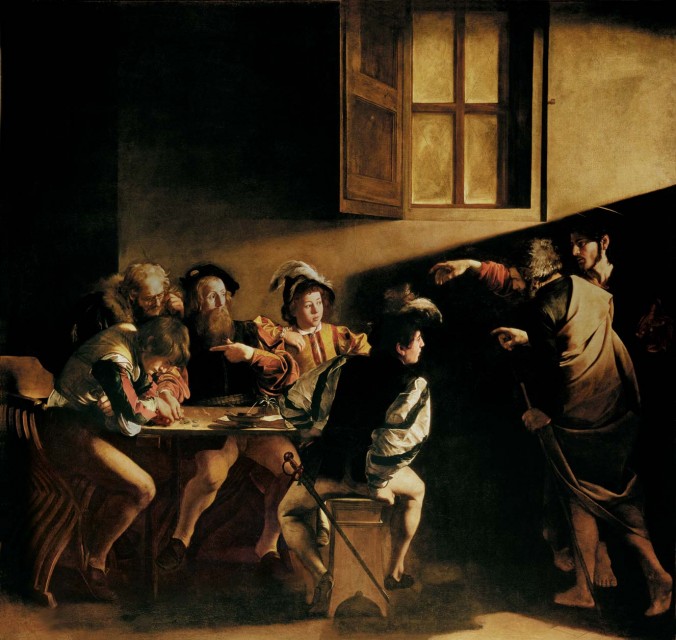
Caravaggio “The Calling of Saint Matthew.” 1599–1600. Oil on canvas. 322 cm × 340 cm. San Luigi dei Francesi, Rome
That painting changed the history of visual art. Caravaggio was a visionary man who had an incredible intuition: that you can use light or darkness in a symbolic way.
At that moment I understood that yes, I was very knowledgeable in technology but I was very ignorant about art.
In creating a Film, it is necessary to consider much more than just the technology to materialize an image on screen. Nobody had presented this kind of viewpoint to me before.From that moment on, I started to try to understand why cinema is called the 10th Muse. It nourishes itself from the other nine: from literature, painting, music, sculpture, architecture, philosophy and so on. I didn’t know anything about that. I realized that my lighting, in any film, had to begin with a visual concept. At the very least, we need to know some history of the several “Arts” that are part of the film language.
For example, knowing something about Architectural history will help us to understand the kind of light that is appropriate in a Romanesque, or Gothic, or Renaissance, or Baroque cathedral. The specific kind of movement of the camera should be connected with the Literature of the story. That’s why I call my form of expression, “Writing with Light.” Not painting with light. The rhythm of the camera and lighting should have some relation to Music. The composition of Images should be influenced by a knowledge of Painting. If we look at the world in front of us, we see around 180 degrees, and we call this view “Reality.” Only when we select one portion of this world, defining a specific space, with a particular composition, does that image become “Art”, which in Latin means “ability”. In this way, we can express ourselves in visual art.
That’s why, in cinema, when we change the composition or the lighting, we change the emotion of that specific image. So we’re using painting, music, literature, the three main elements that dictate the way that we have to perform in making one film. Of course, everything will become more mature with philosophy, with architecture, with sculpture, and so on. But the three basic elements are essential: Image-Music-Words.
When I understood that, I tried to read as many books as I could. I discovered that William Faulkner wrote long sentences that lasted many pages before he put in a comma. That can be compared to a long take. Using the same concept, Caravaggio was making specific relationships with darkness and light, mainly in the conflict between them. On the other hand, Johannes Vermeer tried to create harmony between light and shadows. Leonardo DaVinci was trying to find the perfect balance between the two opposite extremes: the Penumbra. Reading many philosophers, I realized that every single visual element could influence our mind, giving us different emotions. Why?
Because light is energy. Every single color, according to Isaac Newton, has its own specific wave length. The kind of energy, the kinds of vibrations that arrive in our body, give us a different feeling. A different emotion. This is something that is scientifically proven. One different color will change our blood pressure, our metabolism. Freud discussed the colors of our dreams. If, when we were very young, we witnessed our mother dressing at a particularly harmonious moment, for example, in an orange color, we connect harmony with orange. Or maybe if somebody else was dressing with the same color at a sad moment, we might look at this color in a negative way. This is the Symbology of color. There are several studies on the physiology of color that tell us how our body reacts to the different light or colors.
I read as much as possible about philosophy: Plato, Aristotle, Socrates, the modern philosophers, painters, scientists, etc. And from that moment on I started to write down the basic visual concept of each film. In Italy, we were made very aware by the director that each movie had to have its own look.
As I was searching for the kind of cinematography specific to certain subjects, and writing down all these notes, I also realized that I’m not a writer in words. I mainly write in images. So I was also taking still photographs and including them with what I was writing. These notes and photos eventually became my trilogy books: “Writing with Light,” “Colors” and Elements.” They are now united in a single volume.
When Gabriele Lucci put together, in 1981, “Una Città in Cinema” in L’Aquila, several cinematographers came to do seminars and workshops. At one point, he asked, “Vittorio, what can we do to improve this concept?” I said, “Gabriele, what we need is a university. If you want to be an engineer, you go to university to study engineering. If you want to be a writer, you do literature. If you want to be an architect, you do architecture. But if you want to be part of the visual world in theatre, in cinema, in television, you don’t have a specific university department. You have an institute. You have courses, workshops and seminars. But you don’t really have five years of visual studies. In my opinion, what I lacked was the fact that I had never been taught in a balanced way. I knew about the technology that our teachers taught us, but not the other areas. We need a university that could teach, at the same time, the history, the technology and the art. In Italy it is not so easy to open a university. In the beginning we called it “Academy of the Image.” I was teaching in that Academy for 10 years. And I never spoke with a student about technology. I asked some friends of mine to teach technology, because, of course, technology is very important, but not by itself. What I was trying to do with my trilogy books “WRITING WITH LIGHT-COLORS-ELEMENTS” was something that nobody did at that moment. It really assembled the concepts that many philosophers, scientists and painters had done in their own lifetimes. At “The Academy of image” in L’Aquila, I was trying to teach the philosophy of cinema and the language of cinematography. But I was not the only one. Other cinematographers in different countries were coming up with similar concepts.
This was the time when we changed the concept that you cannot do film in color if the film is dramatic. In the seventies, we started to use color dramatically. Vilmos Zsigmond did it in “McCabe and Mrs. Miller.” I did it in “The Conformist”, Billy Williams in “Women in Love”, Nestor Almendros it in “Days of Heaven”, Sven Nykvist in “Cries and Whispers”, Haskell Wexler in “Bound for Glory”, etc.
It was a new generation of Cinematography. I realized that my life was like a journey, made with different chapters. For my first 10 years as a cinematographer, I merely was focused on the concept of Light, following the discovery of Caravaggio’s painting. The second part of my life focused on the meaning of Colors. And in the third part of my life, I tried to find the balance between opposite Elements: shadows and light, black and white, matter and energy. I realized, at this point, that this was the main concept of my own life. You may notice that each particular journey is described in each one my three books. Each is influenced by one specific director: Bernardo Bertolucci, Francis Ford Coppola and Warren Beatty.
When I started working with Director Carlos Saura, I found a different way to express myself. If we look at a film with Carlos, we see a completely different “Cinematography style” from what I did with any other director.
I started to investigate about what the great Greek philosophers–Plato, Aristotle–were considering when we have an Idea, a new inspiration, coming from a suggestion of what is called the Muses.
(In Greek mythology, the nine muses were goddesses who inspired literature, music, science, dance and any other “Art” known at that time. They had names: Calliope, Melpomene, Terpsicore, Polyhymnia, Clio, Erato, Euterpe, Thalia, Urania).
Each muse was connected with a specific segment of art. Terpsichore took care of dancing, Euterpe of song, Calliope of epic poetry, and so on. That’s why I started to investigate the meaning of different arts connected with the different muses and I prepared my fourth book of the series “Writing with Light” called “The Muses.”
Later I realized that the nine muses did not encompass our Moderm Visual Art. The forms of expression connected with photography, cinema and television were not known in the era of Plato. So I invented a 10th muse called “Aurea” for the visual modern era that we live in. We shouldn’t forget the different forms of expression that human beings have known. Five centuries before Christ, the great Art of the time was created by Greek sculptors: Myron, Phidias, Polyclitus, Praxiteles, Scopas and Lysippus. The same thing can be said of the great Philosophers: Socrates, Plato, Aristotle, Anasimandro, Anassagora, and Anassimene. One form of expression was in stone, and the other was in intangible thought. These are incredible opposites.
The Romans made incredible progress in architecture. They built sewers, aqueducts, temples theatres, and bridges. If you discuss the Renaissance, with Leonardo, Michelangelo, Raffaello, you think mainly about Painting. In the 17th century, it was mainly Music—created by Wolfgang Amadeus Mozart and others. In the 18th century there was an incredible surge of Literature. The 19th and 20 centuries became the modern visual era. Our era. They are still here today in the 21st century. “Cinema” mainly.
We are all born in the womb. But there are some people who have the chance to see more. To be more open. To have in their minds some intuition that others may lack. I tried to investigate several Visionary people, starting with Albert Einstein. The incredible intuition this man had was that E = mc², that mass has an energy equivalent and vice versa. This was an incredible intuition like the one that Caravaggio had in painting.
I am now preparing a new book titled “The Visionary” in order to try to understand why some people, in a different field like Cinema (a Cinematographer, a Director, a Writer) have the chance to see beyond, to have an intuition that allows them to perform, to create something different in a very personal way.
In all my creative life I had the desire to attract the kind of films that I needed to do, that provided unique opportunities for me. Light was the main concern in the first part of my life in cinematography, beginning with films like “The Conformist” or “Giordano Bruno,” a creative period where I was not aware of the meaning of colors. I was mainly concerned with the relationship between Light and Darkness. Particularly after “Apocalypse Now,” I realized that I lacked the knowledge of these concepts. So I studied for one year all I could about the philosophy, the symbology, the dramaturgy of colors. And, as if by maagic, they offered me the films “La Luna,” “One From The Heart” and “The Last Emperor”.
You were studying first and then the films just happened to be offered?
I had a feeling something like this would happen—that these films were coming. The situation was similar when I was researching “The Visionaries” and then the film about “Zapata,” “Caravaggio,” “Mozart,” and “Verdi” were offered. One way or another…it is like we are sending some Energy out of us that someone else is capturing…it’s like the force that attracts iron.
Magnetism?
Magnetism, yes. You attract something. That’s what’s happened to me since ever, particularly in those last periods. For example I did “Little Buddha” with Bertolucci thanks to great friends of mine, two brothers, Camillo and Luigi Bazzoni. Luigi had given me several books about Buddhism. My inner desire was to know more about that particular area. In fact, I gave one book to Bernardo and one day I wrote to him, “I know that at present you won’t read this book. But some time in your life, you have to.” And one day he called me and he said, “Vittorio, you know what happened today? I was looking at my bookshelf and I noticed one color, one book. I took down the book. It was the ‘Level of Consciousness’ by Aurobindo. Inside you had written that one day I would read it.” And he had the desire, the will, to do a Film about Buddha.
I was so happy doing “Little Buddha” and I transferred this joy to all my crew, telling them, “Can you imagine that we are here, performing our profession while we are being taught to understand, scene by scene, the meaning of life? In reading the story, in listening the words of Siddhartha, in trying to visualize them, we are learning the basic principles of life. It was such a wonderful joy for us.
More and more, I began to understand why and how we are performing in any profession. What we are really doing is trying to understand who we are. We’re trying to understand the principle and the meaning of our life itself. That’s why we have incredible joy when we discover something new in our work.
Woody Allen and I were talking few days ago that we were very, very lucky doing a profession that we love. In expressing ourselves, we are trying to understand who we are. And he told me: “Yes, until we reach the perfection that we would like to achieve.” And I said, “Well, Woody, the moment that you achieve what you think is perfection in a movie is the moment you will stop doing movies. It’s better that we still have something to discover so we can continue to do them”.
His films, and yours, are journeys of discovery.
Everything is like that. After “Little Buddha” I wanted to investigate the story of Jesus. I started to research paintings through different centuries that portray the story of Jesus. Each different religion has its own legacy, its own tradition and culture. In the Christian religion, since a long time ago, every Pope felt obliged to give commissions to great artists to visualize the story of Gospel, the history of Jesus, in order for people to identify with a known figure. Thanks to that we have such incredible masterpieces like the “Sistine Chapel” and the “Pieta” of Michelangelo or “The Last Supper” of Leonardo. I started to search for a way to visualize the history of Jesus and I did an incredible amount of research. I was not even finished with it,–of course you can never finish something like that–and I received a call from the producer Barry Osborne. We did one the last segments of “Apocalypse Now” and “Dick Tracy” together. He had just finished the trilogy of the “Lord of the Rings.” He arrived in Rome to have a vacation, he called me and I said, “Let’s get together tomorrow night.” So he came to my house and we celebrated New Year’s Eve with the family. A few months later I received a call from Dean Wright, an American director preparing a film titled “Kingdom Come” about the story of Jesus Christ. Barry had told him about my research. Dean came to Rome and I showed it to him. It was practically as if I had already done my homework. I was ready. I was dreaming to do that kind of story. I reached all of Dean’s crew in New Zealand. They had done an incredible job of pre-production. I was there with him for four months to prepare that incredible and wonderful film. During the next Christmas break, unfortunately the global monetary crisis of 2008 stopped the film from materializing. That’s one of my broken dreams. Let’s say that I hope one day it may be resurrected.
Time went by and I thought, well, I’ve visualize the story of “Buddha”, I prepared the story of “Christ.” I realized that in different religions, there are several connections between those incredible spiritual leaders. In order to amplify this concept, I started to read a little book about the story of Muhammad.
I was really enchanted by how much the history of Muhammad has many similarities to the life of Jesus. The more I was reading the more I was, out of professional habit, trying to say to myself how wonderful it would be to visualize the history of this man. I finished the book, I put it on the table, not even 30 seconds went by, and I heard the little ping as email arrived. I opened the computer and an agent named Robbie Little from Los Angeles sent me an email to ask me if I was willing to be part of a project about the story of Muhammad directed by Majid Majidi.
Coincidences like that don’t happen.
That’s not a coincidence. I think that when you love something for real, in such a way, you must send out some energy that somebody captures. I don’t know how it happened. I think that if you love something, if you believe in something, for real, you prepare yourself to be ready for it. They sent me the script. Majid Majid came to Rome with the producer Mehdi Heidarian to meet me. I remember it was 2010, on my birthday, June 24. We spent all day together in my house. I asked them if they were planning a project that would try to divide or unite the different religions. Majid said, “Vittorio, for me it is very important to do this project not only for Islamic people but for all international people. This is why we came to you. We would like to have several international collaborators to help me to do this story for an international audience. I would like the story to be a good interpretation of the Koran and the philosophy of our Prophet about the dignity of man.”
I answered, “I’m ready to do it.” From that moment on, I started my specific research, searching in every possible way images about the history of the period. Majid invite me to go to Iran. We spoke about the project. I flew from Rome to Iran. Together with Miljen Kreka Kljakovic, the production designer, we visited the place that they selected to rebuild Mecca of the 6th century, just outside Tehran.
We had a great collaboration between myself, the production designer, the costume designer, the makeup artists, the special effects supervisor, and so on. Meanwhile I presented to Majid a video with some film segments of Bertolucci, Coppola, Beatty and Saura saying “If this quality of Cinematography is what you want from me, of course I need some special technology and special crew.”
I like the Image’s composition to be Univisium system (2:1 ratio). The system has a copyright from Technicolor and Panavision. So I proposed Panalight in Rome to supply the 6 ARRI Cameras and all Grip equipment. I proposed the lighting package that I normally use. I proposed some of my usual crew, who know how to use the lights, the camera, the Technocrane, and so on. I also proposed Technicolor as the laboratory and Kodak film from Rome. Pratically all technical equipment came from Italy. It was a multi-national crew. We had two camera crews from Italy and two from Iran. For visual effects, we had Scott Anderson from America and my son Fabrizio from Rome.
After a few trips back and forth between Rome and Tehran, I stayed ll year in Iran to prepare the film. Locations were all around Iran. We went to the desert of Kalut, a wonderful place near Afghanistan. We went to the Persian Gulf.
We really started filming in Iran at the end of October 2011. We filmed for 12 months until October 25, 2012.
Why did it take so long?
That’s not long. In Iran, a movie can take as long as five years to complete. We worked very fast.
But compared to European or American productions?
No, the picture is an epic. And the theatrical version is three hours long. The television or DVD version could be at least six hours.
Was this the biggest budget Iranian film ever?
No doubt. It’s really a classic, epic, spiritual film. It’s about the journey of a young boy, but he is called “Muhammad”. When I started to work on the visual concept, I said to the Director, “I would like to establish a metaphor between life and light. I would like to visualize a different age of the young boy with a specific color. I would like to underline his life’s journey through the color spectrum’s journey.”. And Majid said to me, “No, Vittorio this is not possible.”
I said, “Majid, he is just an infant at the start of the story. He’s very innocent at the beginning. He becomes an adult and later he becomes a Prophet.”
And Majid said, “No, Vittorio, for us he’s a Prophet from the beginning. From when he’s born.”
That changed my concept completely. I said, “I understand now, let me rebalance everything.”
I wondered how it was possible to visualize divinity. I wondered how we could visually represent the harmony, the balance of the little Muhammad. “If I can represent every single moment of a human being’s life with a color: red, orange, yellow, green, blue, indigo, violet, how I can represent visually a Prophet’s life?
“White” was my answer. Visible Energy. So the only way that was possible to visually represent Muhammad as a child is white. I said, “Majid, now I understand. But the baby has to be dressed from the beginning to the end in white and no one else should be dressed in white like him.”
Since the ancient Greek time, Apollo was represented in different sculptures with beams of sunrise around his head. It was representing the God of the dawn, the beginning of the day. In Byzantine times on mosaics, auras were put around every saint to visualize their high spirituality. These great visual intuitions represented inner energy.
Each one of us sends energy. We not only receive energy but we also send energy that can be visualized with our “Aura”. The more spiritual we are, the more our aura is bright. Buddha is represented with an incredible aura around him. So is Christ in most statues and paintings.
I though, “This means that I have to follow every moment of Muhammad with a beam of light in order to visualize his spiritual presence in every frame.” So the main idea was to visualize the reality around him with a journey into the color’s spectrum. With Muhammad, it would be with visible energy. Life before the birth of Muhammad could start very contrasty, from the color Black, in a monochromatic tone, before the birth of light.
A shaft of light and a dazzling white.
When we did the nativity scene Majid asked me, “Vittorio, please, you can do it because you have the culture to do that, to have a scene that reminds us of a Renaissance painting about a birth.” So I thought that the scene could be visualized with Light coming from the baby in the arms of his mother. I used a little oil lantern, near the mother and the two women around the baby and a specific light was concentrated on the baby in order to have its reflection illuminate the entire scene. The poster of the film represents this scene with an additional beam of Light coming from above, representing the divinity. The birth of the prophet is visualized through visible energy: WHITE LIGHT. I continued the journey of the little boy in White, surrounding him with several different colors depending on his age at the time, and of course with the help of the Production and Costume designers in order to have clothes and set dressing helping the color’s journey.
Majid also said to me, “Vittorio, when we do the birth of Muhammad, I would like to have some particular event happening in the sky, maybe several falling stars.” I though immediately about the similarity between the birth of Muhammad and the birth of Jesus. When Jesus was born there was a very luminous Star in the sky. And the three wise men were following that one because it was very bright even during the day and they reached Bethlehem. I wondered what we could visualize in the sky. A friend of mine suggested we visit the planetarium in Rome.
I knew that at the moment that we are born, there is a combination of different stars in the sky that give us a specific energy impression, that gives us a special personality.
“I’d love to know what happened during the day that Muhammad was born,” I said. So we went at the Planetarium and I found out something really incredible. The technician showed to us the position of the universe at the time of Muhammad’s birth. A very rare triple conjunction of three main planets: Saturn, Mars and Jupiter. Being so close, the magnetism between those three planets was creating an incredible phenomenon in the sky, a beautiful display of visible matter.
I said, “It is a single event?” They answered “No, it happens in the universe every five centuries.”
“Wait a moment. What happened when Jesus was born, almost 5 centuries before Muhammad?” The planetarium computer experts found exactly the same thing: the conjunction of the three different planets.
So I thought, “But Jesus was born five centuries after Buddha, can you show me also the birth of Siddartha.” They ran the computer program and found the similar sky event at the birth of Buddha. I was very amazed.
Majid asked me to to coordinate with him the work of all the different departments. I like to be very involved during pre-production as well as production, so we collaborated together with the heads of every department.
Anyway, my two years in Iran were a very beautiful and creative period. I really loved every moment of it. The collaboration with the two crews– Italian and Iranian–was excellent. It reminded me of our experiences on “Little Buddha:” the pleasure to never stop until the film is completed. My wife visited me several times until I completed the assignment. When I finished the filming, it was exactly like when I finished “Apocalypse Now.” I didn’t feel like doing any other movie for awhile. Several projects were presented to me, but they did not feel appropriate to me at that moment. I was not ready to start work on another story.
It was emotional or physical?
Both. But the main reason was mainly physiological. I continued to follow the VFX via Skype and emails with Scott Anderson in America and with my son at Technicolor. But suddenly Technicolor decided to close the company in Italy because they stopped photochemical work.
Did they shut the whole thing down?
Completely. Even the digital. In Europe, they shut down in Spain and Italy. I called Technicolor Los Angeles to ask them to stay open until we completed post-production. I had signed my contract with Production to include Technicolor. I brought the movie to them. But it was impossible because the Iranian executives didn’t know the final completion date of post- production.
My idea was to do the movie completely on film in Univisium. We had six cameras over there.
We had three Arri 535B cameras, one Arri 435 high speed, one small ARRI 235 for the aerials and one Arricam LT for the Steadicam. I said to Majid, “If we cannot visualize Muhammad’s face but we can visualize him from his back and his movement, we should use a specific camera to visualize his view. We should use the Steadicam for the point of view of Muhammad. Everything came from Panalight Rome. I was planning to do everything photochemically. Normally, on all my movies, we print from negative to positive, making the correction on the new print, having only the visual effects segments done through digital transfer, and editing everything on film. After that we do the telecine in high definition for Blu-ray and TV.
What did you do about dailies on this film if Technicolor shut down?
During the shooting Technicolor was alive. They shut down one year later, during our post production. One of the best elements we have when we work in film is the variety of film stocks available. On this production, we had four different emulsions of Kodak Vision films. Two for tungsten light, two for daylight, both in low and high speed. We were sending exposed negative to Technicolor Rome every three days. I was in contact by email and Skype with the colorist Nazareno Neri. I received dailies on Blu-ray and I had a big monitor at the hotel. Every Saturday afternoon, Majid and the entire camera crew would look at the dailies.
What lenses did you use?
The lenses that I love the most: the Cooke S4 primes.
We had the wonderful 35-foot long Technocrane which we used every day. The lights were from Iride in Rome, which I have always I used since 1983. Because Technicolor and Kodak closed their offices in Rome, Production moved the post production to Munich where editing started. I suggested Roberto Perpignani as an editor. I knew him since 1963 when we were doing “Before the Revolution” with Bernardo Bertolucci. He was the editor for Bertolucci on “The Last Tango in Paris” and many other films. He has an incredible knowledge of culture. All of 2013 was dedicated to editing this film.
In 2014, ARRI Munich scanned all the negative in 4K, 16-bit. I graded at SCREENCRAFT Entertainment, with Philippe Schmid as colorist on Baselight. We graded with a 4K projector in real time. I like this way of working very much. In August 2015, the film was presented at the Montreal Film Festival. It was very well received. It was also presented at the American Film Institute in L.A. for the American Society of Cinematographers. The Film opens on Friday December 11 at the Laemmle Music Hall Theater in Beverly Hills.
Since we were talking about the different stages of your career, I can’t resist asking what it’s like now working in this new digital era on the Woody Allen film?
That’s a good question for the next edition of your magazine. But I’ll tell you something about why I convinced Woody Allen to do this movie in digital.
You convinced him?
Yes. Because he never did digital before.
Without any doubt, it was a shock for me that Kodak and Technicolor closed their offices in Rome. I realize that there is something called “Progress” that you can speed up or you can slow down. But you cannot stop it. I realized that even if when I started my first experience in electronic cinema with Sony in 1983, when they went all around the world to make an experiment with their new High Definition Video System and we did “Arlecchino” in Venice, directed by Giuliano Montaldo. But without any doubt the quality of film was keeping me alive all the time. I shot 58 films on film. In 2009 I did one small movie with Carlos Saura titled “Flamenco, Flamenco” using digital capture, but it was done completely in a studio, with full control of all the lighting. Now with this new Woody Allen picture, it was time for me to move into Digital capture. I think that we cannot chase after something that is vanishing, attempting to grab its tail. That’s all I can say now. The next chapter is digital video in our next interview.
Interesting. To be continued. If you were to describe the style and your vision of the film “Muhammed,” how would you describe it? Spiritual?
I think that the simple way to visualize the Divinity in visual arts, can be the Visual Energy: THE WHITE LIGHT.
It seems you’ve entered a fourth phase in your own journey.
In a contemporary film, doing a picture like “Dick Tracy” or “One From the Heart,” it is possible to use the entire color spectrum to visualize different characters and story situations. One is a comic strip, the other one is an imaginary town where electronic elements, such as neon signs, give to us the liberty to use any color. In a period film, we should follow the natural sources of Light.
In day time we have: aurora, dawn, morning, day, afternoon, sunset, dusk. At night we have: a fireplace, braziers, the moon, etc. I used the color green, between the two opposites of the color spectrum, in a symbolic way. Muhammad, at 12 years old, is going with the caravan and suddenly the camera stops in front of something they have never seen before: the sea. The boy is mesmerized in front of an incredibly vast stretch of blue water. It is a big emotion for the boy. We see him from the back, because we cannot visualize his face. Otherwise he will became a symbol and Muhammad was against idolatry; he believed in only one God. But when they arrive at a fishing village, I have the water changing to a greenishcolor. It’s the color of a stagnant pond, not healthy, as it is poisoned. They discover that nobody is around; there are no signs of life. All the inhabitants are starving. They have moved into a cave, praying to an idol in the hope of receiving again some fish from the sea. Muhammad sees a big idol on top of a little hill and there is a child crying. He is attracted by this cry and finds a woman with two little kids tied up next to the idol. The village was offering them to the idol in an attempt to bring the fish back– they need fish to live, to survive. Muhammad unties the mother and children. The people inside the cave become totally upset and start running toward Muhammad. We start to hear the noise of the sea. It becomes stormy, really like a tempest. Muhammad is able to send the woman and the two children to safety. The waves become very high but never touch Muhammad. The sea, in making this movement, is regenerating the water, breaking up the stillness. The sea, wave after wave, turn its color into BLUE, becomes healthy again and with the big waves a lot of fish wash up onto the fishing village. It is a sort of miracle and everybody is happy.
The sequence is beautifully done by SCANLINE VFX, a great visual effects company in Munich.
Later, Muhammad is around 50 years old. He announces to everyone that they’re supposed to leave Mecca and go to Medina. Mecca was built in a grid of cross streets going to China, Persia, Arabia, Syria. Abraham, after a long voyage through a desert, found a spring of water at that very crossroads. Thanking God for that, he build a Kaba, a stone building that became a sacred element where Mecca was created. In one corner of the building a black stone was placed. It was a meteorite that became the sacred stone to be touched by everyone who circulated around the Kaba. Caravans would arrive in Mecca to sell their goods and buy things in the market. It became a very rich town. There were many idols brought from different places. But Muhammad’s concept was that we have only one single God, as it is in the other monotheistic religions, and he condemned idolatry. What the movie “Muhammad” really says is that each one of us should respect other religions. We are united in our belief in one single God.
I remember we were in the middle of the desert of Kalut in Iran, near Afghanistan. Every morning, I arrived very early to find specific angles to propose to the director, Majid Majidi. I was walking all alone in the middle of this desert. It was very beautiful, with incredible rocks in between colored sand. I thought to myself how lucky I was that, at 72 years old, I was involved in a very important film done in the old classic style, with the crew and technology that I desire. It was an epic, classic, spiritual film very close in concept to the movie that I did with Bernardo Bertolucci, “Little Buddha.” The fact that while you are filming, while you are working, while you are using your professional knowledge to live day-by-day, at the same time you understand the meaning of life itself. This is wonderful gift.
So I said to myself, “Whom should I thank to be so lucky?” I have to thank my father who pushed me to study photography and cinematography. His dream was to be a cinematographer and his dream became my dream. I have to thank the very good teachers that I had, I have to thank very good crew members. I have to thank several great directors, particularly Bernardo Bertolucci, Francis Coppola, Warren Beatty, and Carlos Saura. On top of all this, I realize that we are the result of everybody who came before us. I have to thank all the cinematographers all around the world who, since the first movie that I saw as a child, gave me knowledge, emotion, and taught me to love Cinematography. I then realized that I had to do an homage to all of them. So I called another cinematographer, Luciano Tovoli, and I explain an idea to him, to make a book about all Cinematographers around the world who, in a century of cinema, made the history of cinematography. This book is titled “The Art of Cinematography.”

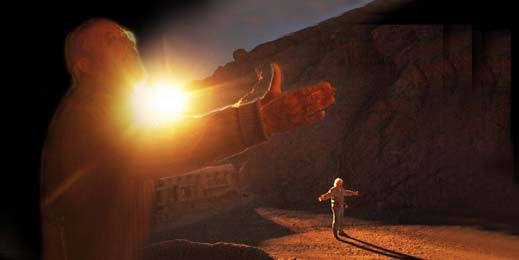
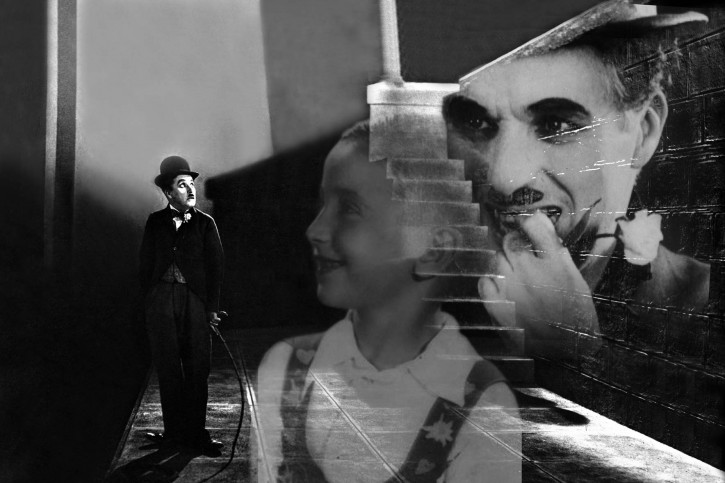
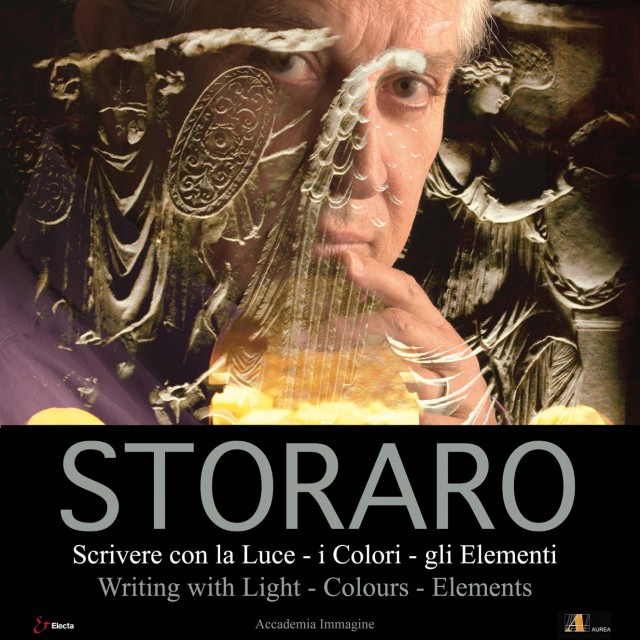
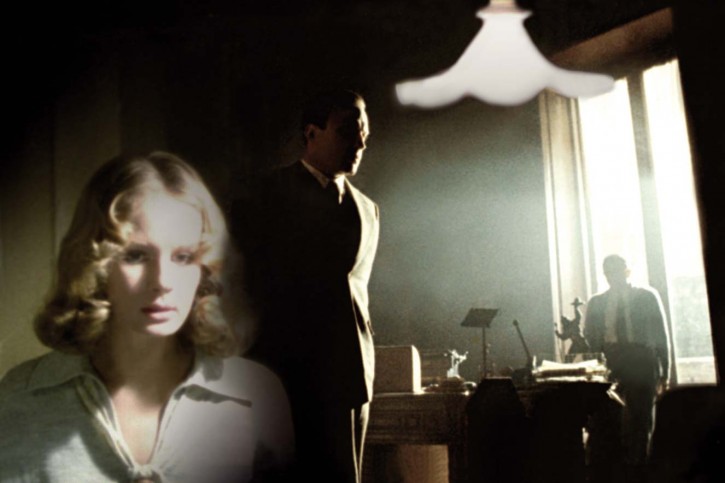
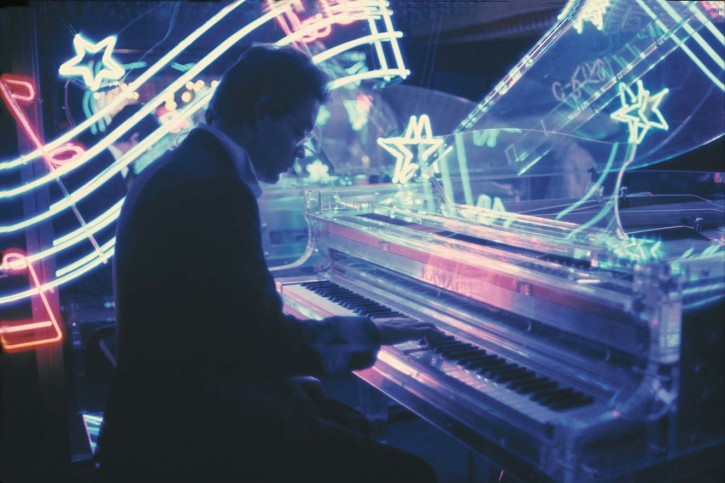
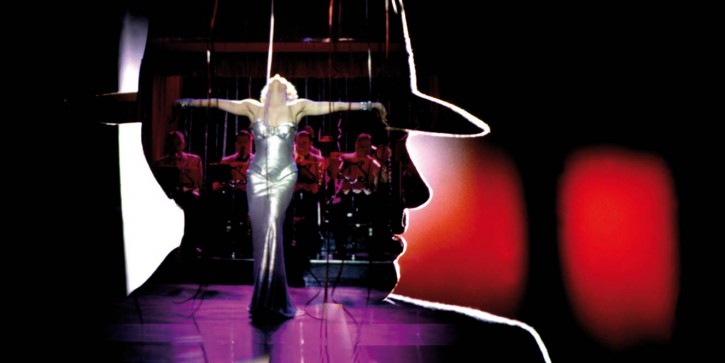
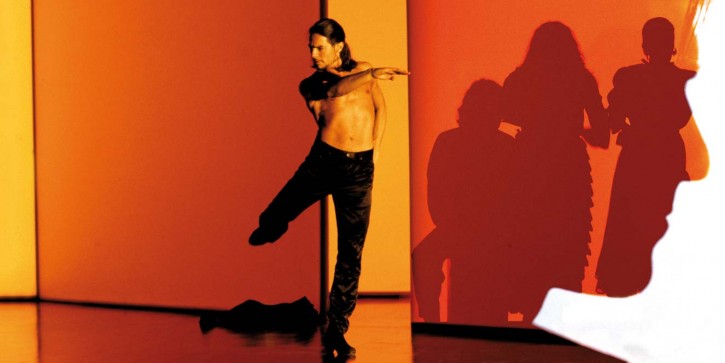
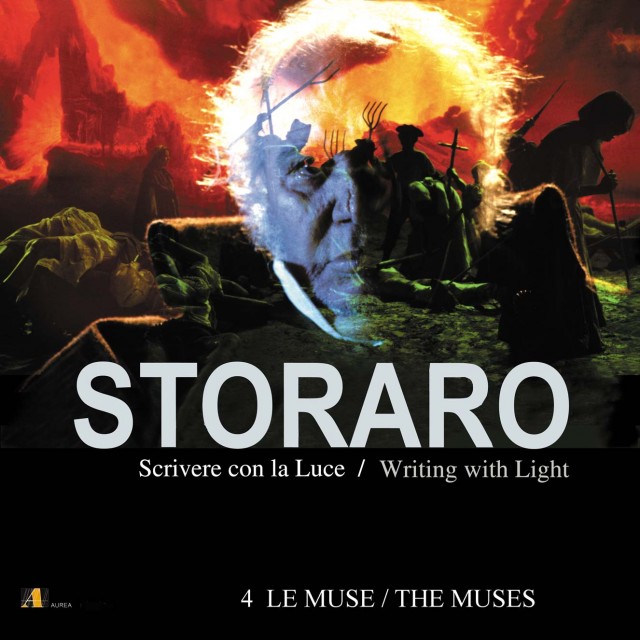
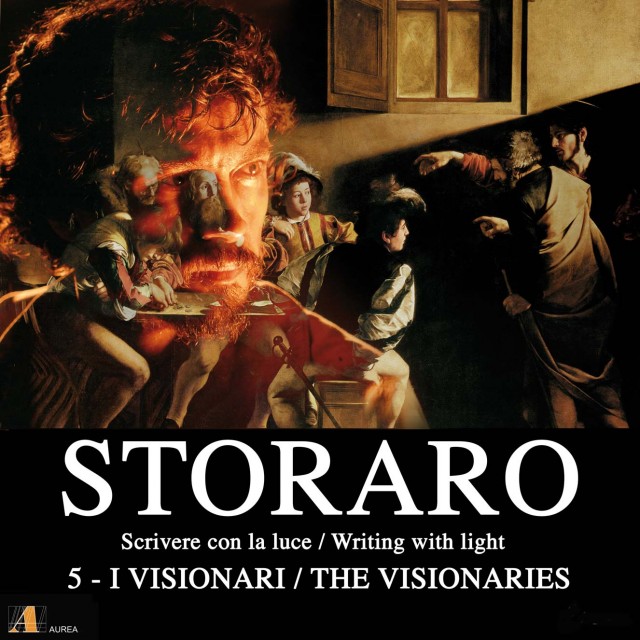
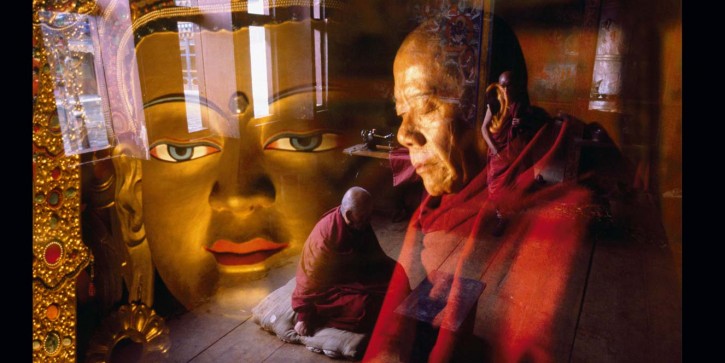
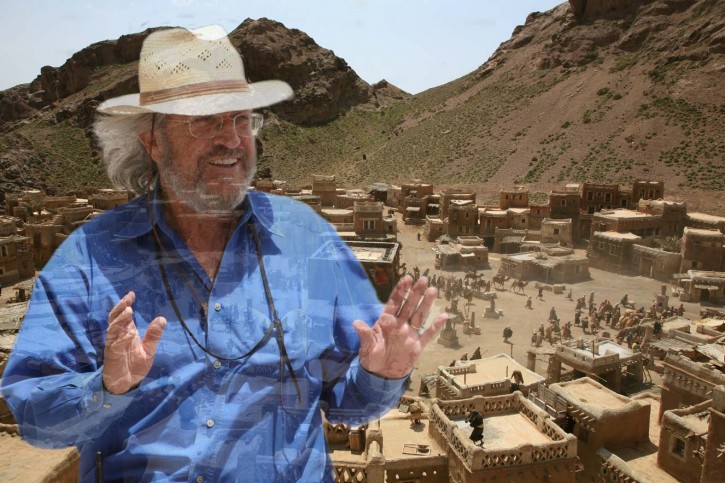
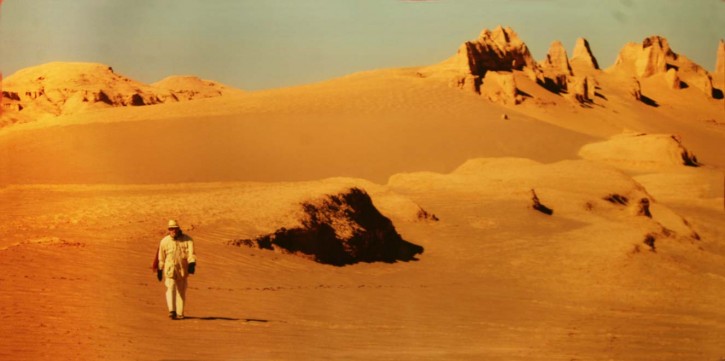
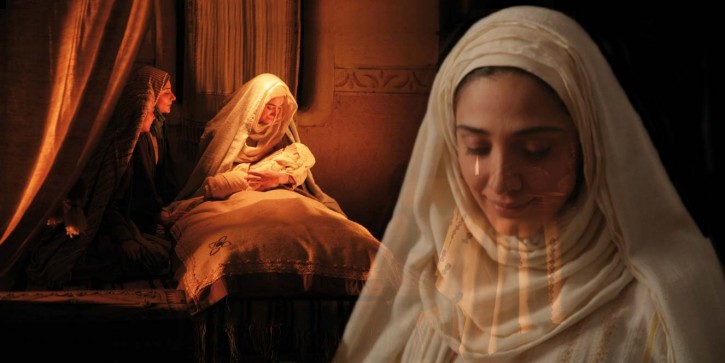
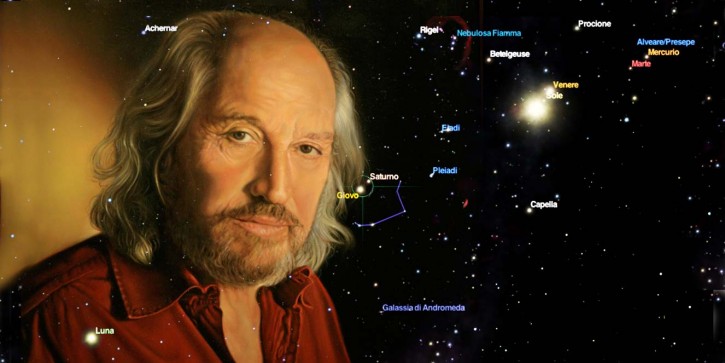
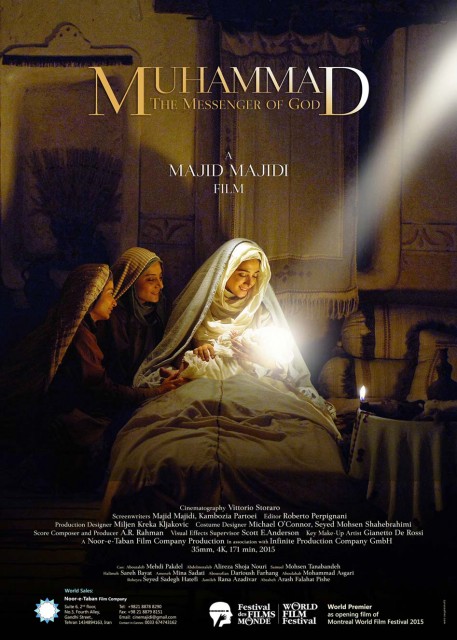
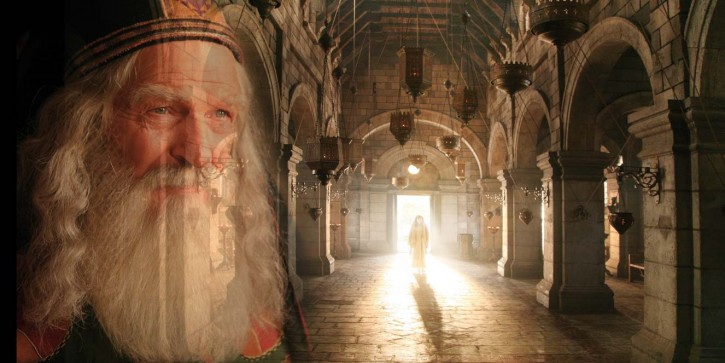
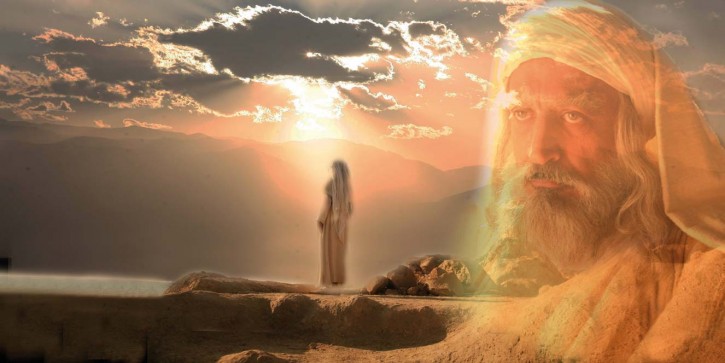
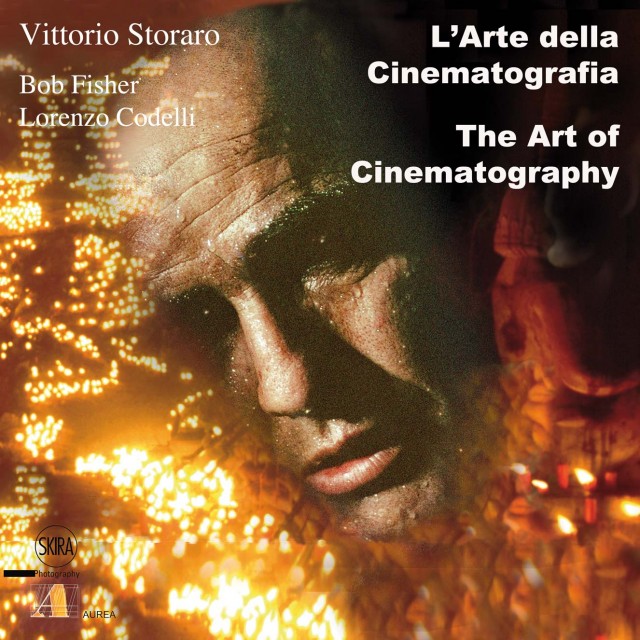








Great article! Rennaisance art has influenced cinematography knowingly or unknowingly. Please let us have more such articles. Thanks.
I feel very lucky today to learn about Vittorio Storaro for the first time. Thanks to the law of attraction-it’s better late than never. What an incredibly bright soul!
Vittorio Storaro is an amazing cinematographer and individual. In his work, the heart, mind and soul of cinematography is infused with the highest standards of artistic and philosophical traditions with a humanistic touch.
Vittorio is in a class by himself!
Vittorio, A GREAT ARTIST and a GREAT friend… One of the tresors of my life was to have known and worked with him. A big hug, carissimo¡